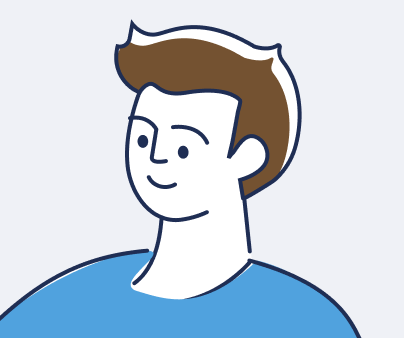*This post was originally published on January 22, 2016, and updated on July 25, 2023.
Successful dental offices operate efficiently, leveraging enhanced workflow management, robust systems, and synchronized product integration.
The standard practice involves two separate units that must work together: clinical and office management. When both are working well, a dental office should notice increased productivity. But what is the best way to improve your team's productivity? In this post, we’ll explain what can increase productivity in a dental office.
Listen to this blog post:
Telltale Signs That Your Dental Practice is Busy, Not Productive
It's a common misconception that a busy person is a productive person. When you walk into an office and see people bustling around, you might assume those people are productive. But if your employees are frantically working all day and you're still running behind on key tasks and goals, they're probably just busy and unproductive.
Here are some key differences between busy people and productive people:
- Busy people work hard, and productive people work smart
- Busy people are task-oriented, while productive people are goal-oriented
- Busy people are inefficient, while productive people are efficient
- Busy people appear frantic, while productive people are focused
If it seems like your team members are running around all day and not ever catching up, it's a good sign that they are busy instead of productive. The good news is, there are things you can do starting now to change that.

What Can Increase Productivity in Dental Practices?
Making the shift from busyness to productivity requires care and attention. We've come up with 28 things you can do to increase office productivity in your dental practice.
Enhancing Patient Experience
1. Reduce the Time Patients Spend in the Waiting Room
When patients spend a prolonged time waiting to see a dentist, it can hurt your practice. You should track patient wait times to determine if long wait times are an issue in your practice.
For both dentists and assistants, it’s a significant challenge to overcome this issue, but it is important to remember that efficiency can make or break your practice.
Your team members should be trained to interact with the waiting patients in a way that lets them know they have not been forgotten. For example, if you're running behind schedule, your team should inform patients that there will be a wait. They should also include an approximate wait time.
Communication is essential. For example, if a patient is told it will be a 15-minute wait but the wait extends beyond those 15 minutes, another follow-up conversation is important to keep people comfortable and informed. The follow-up should happen as soon as you know that the wait will be longer than anticipated.
While nobody likes to wait, at least knowing when they will see the dentist will keep people in their seats. Provide additional information, including how much longer it may be before a patient can see the dentist.
There are other ways of making it look like you have reduced wait times in your office. These include keeping patients moving; when a patient arrives, invite them to wait in an exam room. Moving people out of the waiting area makes it clear that the line is moving. You may also be able to perform a procedure on one patient and then begin treating another while the first waits for x-rays.
Wait times can also be reduced if your team works efficiently. That means
- Knowing the timeline for each dental procedure for scheduling purposes.
- Training your team to perform basic dental procedures such as dental impressions (depending on the laws in your state)
- Ensuring that the hygienist is always available to make the patient’s oral assessment.
- Delegating responsibilities appropriately
- Managing supplies and equipment through automation
- Assigning a dental assistant to each chair in the office
If you often run behind, it might be time to consider revamping your scheduling procedures, inviting another dental assistant to join the team, or bringing on a dental partner to expand your capacity to provide services. At the end of the day, if a patient can get an appointment but has to wait a long time to see you, they may find their way to another dental office.
2. Streamline Patient Intake Procedures
If you're still using a clipboard and pen, your practice likely isn’t running as efficiently as it could. Manually collected information means someone else must input the data, which takes extra time.
Take advantage of modern technology and invest in tablets or laptop computers. Integrating systems allows
Electronic records are more secure than paper, minimizing the chances of lost files or unauthorized access. While transitioning to digital systems may seem like a big task, it’s a one-time effort that pays off long term.
Most dental office software includes electronic record systems that are easy to update and focus on HIPAA compliance. They also help protect sensitive financial data, like insurance and payment information, reducing the chance of human error and maintaining patient trust.
When using electronic databases, the likelihood of misplacing financial information virtually disappears. What’s more, offices like yours need to make the move into the 21st century and keep up with what the competition is doing. If you still use paper records, you should strongly consider upgrading to a robust office management system.
3. Enhance Patient Perception of Hygiene
Hygiene means a lot more than simply being clean. You need to train your team members to engage patients in conversations about proper hygiene practices.
If the employees answering the phone and interacting with patients are trained properly to reinforce the value of regular dental hygiene visits, it can both improve your efficiency and increase your profits.
By encouraging bi-annual hygiene services, your practice will likely see an increase in the following:- Adjunct re-care services
- Antibacterial therapy
- Sealants
- Whitening
Productive practices confirm appointments 48 hours in advance and schedule the next appointment before the patient leaves the premises.
While patients often know that they should be visiting the dentist regularly, they may still put off appointments. Since delays lead to longer appointment times, it makes sense to encourage regular appointments.
Training your team on how to coach patients into booking appointments is important. Whenever a patient calls, have your staff look up the last time they were at your office. If it has been more than a few months, offer a new appointment. With potential patients, ask for the date of their last dental treatment and offer appointments accordingly.
Collecting information about what treatments were performed and when can be used as a trigger to promote appointments and check-up services. Reminding patients that regular cleanings and x-rays prevent tooth decay and long-term issues will ensure your calendar is always full.
Dental imaging software is an essential tool for any modern dental practice. It allows you to capture high-quality images of your patients' teeth, gums, and surrounding tissues, making it easier to diagnose and treat a variety of dental conditions. In this review, we compare the top dental imaging software options on the market to help you find the right one for your practice.
Another good practice to adopt is to review your patient database regularly and see which patients have not returned in a while. Have your team phone those patients and offer to schedule an appointment.
4. Improve your Practice by Paying Attention to Patient Complaints
Now and then, you will have to deal with patient complaints regarding your staff or practice. It’s just part of running a business. You can improve productivity by getting ahead of the game and having a system for dealing with patient complaints. You may want to assign this task to a dedicated team member.
You can start by having a review system in place to generate more reviews and get feedback from your patients. Once you have collected information from patients, it is important to follow up on the negative comments. Don’t just collect the information and ignore it. There is a lot of value in exploring not only what is going right in your dental practice but what is going wrong, as well. When you get a complaint, be sure to conduct interviews with the staff members related to the incident. If you have human resources personnel, they may be in charge of conducting interviews. Some dentists prefer to keep their fingers on the pulse of what is happening in their practice, so it is not uncommon to review the files and discuss situations with employees as they arise.
Remember, all feedback is an opportunity to improve your practice. Be open to critiques and complaints, and don’t make the mistake of brushing off negative comments. Addressing these concerns helps you enhance the service you provide and gives patients a reason to trust you.
When patients see that you care about delivering the best dental care possible, they’re more likely to return. Issues may not be fixed overnight, but continued effort shows your commitment.
Be sure to keep the patient updated on any developments related to their complaint. Many people never find out what came of their feedback. If you can, send a note or make a quick call to let them know what changes were made it makes a lasting impression.
5. Optimize Patient Experience
Patients with positive experiences are likelier to adhere to treatment plans, maintain recall appointments, and refer others to your practice. Ensure your office provides excellent customer service through warm greetings, clear communication, and managing expectations.
Provide your patients with comfortable amenities like warm blankets, entertainment options, and refreshments. Following up promptly on inquiries and concerns also drives satisfaction. According to one survey (from softwareadvice.com -no longer published), practices with high satisfaction ratings had 70% fewer missed appointments.
Improving Office Systems and Technology
6. Take Advantage of Automated Billing
Paper billing can delay payments for days or even weeks and with many insurers phasing it out, processing claims this way often takes even longer. Switching to an automated billing system helps your office receive funds faster and more securely.
Investing in reliable billing software can save time and money. Be sure to explore your options, request demos, and check with insurance providers for compatibility.
Automation cuts down on data entry, reduces postage costs, and flags issues instantly, so claims can be corrected on the spot. With less manual work, your team can focus on other tasks, and cross-training ensures smooth cash flow even when staffing changes.
7. Ensure that the Office is Designed for Enhanced Efficiency
An efficient dental office layout balances aesthetics with functionality. Every space should support your workflow and the delivery of care. Whether you're starting a new practice or optimizing an existing one, thoughtful planning makes a difference.
Create a welcoming registration area and ensure your waiting room has enough space for patient flow. A crowded lobby may signal overbooking or limited space for a growing practice.
Private areas for dentists to review files, along with accessible workspaces for team members, are also essential. Investing in renovations—or even considering a new location—may be necessary for long-term efficiency.
Consult with your team about how they use the space. A custom-designed office encourages productivity, saves time, and supports growth.
8. Incorporate Digital Employee Scheduling Systems
When running a successful dental practice, efficient employee scheduling is essential. If you're still relying on a paper calendar, it's worth considering a switch to an electronic scheduling system.
Digital platforms allow you to track changes in real time and give multiple team members access to view available shifts and opportunities. Many systems also let you assign staff to specific time slots while handling payroll, employee deductions, and taxes—all in one streamlined process.
Upgrading your scheduling method not only saves time but also helps your team stay organized and informed.
Employees can use these systems with personalized login information to request time off, leave, vacation, sick time, and more. This means that everyone’s information is in the same place, and you will be able to see the staffing situation of your office at a glance.
Keep your staff happy by incorporating digital management tools to schedule shifts. This method not only saves time for the person in charge of scheduling, but it also provides some autonomy to your team, which they will appreciate. When people feel they are in charge of their time, they are often more productive.
You should also consider the impact of increasing employee morale and overall happiness by implementing the following:
- Conduct employee satisfaction surveys
- Solve problems immediately within the office
- Make changes when necessary
- Bring in a consultant
- Always remember that happy employees build a great dental practice.
As you can see, employee scheduling software can do more than ensure your working hours are covered by employees. Take your time to consider the right employee scheduling software for you. Many of these programs allow you to test drive them before you buy, and you can also request a demo from a scheduling software company to ensure you understand the full scope of the product you are buying.
9. Go Paperless
Is your dental office still using paper for patient charts and billing? If the answer is yes, then going paperless is an option that can help you and your team increase productivity. Making a move away from paper can help your practice in a variety of ways, including the following:
- Paperless workplaces are clean and organized, and working in an organized space can improve focus and productivity.
- Paperless documents are easy to manage and less likely to be lost or misfiled.
- Once trained, it takes less time to create a digital patient chart than it would a paper one.
- In a paperless office, routine tasks can be automated for greater efficiency.
- Communication between team members is seamless, and records are created automatically.
- There's a reduced risk of human error since many fields and forms will be populated automatically.
Dentists who work in paperless practices find that they can use digital tools for almost every aspect of patient care and practice management. X-rays and scans can be added instantly to patient charts. Using cloud-based software means that dentists and their employees can work from any location and have the same access to patient charts and essential documents. Collaboration is easy because more than one person can access a patient file at the same time.
While there will undoubtedly be an adjustment period as you and your employees get accustomed to working in a paperless environment, the long-term benefits in productivity, efficiency, and patient care make the investment of time and money worthwhile.
10. Keep a Close Eye on Your Inventory
Inventory control isn't something you immediately think of when considering what can increase productivity in a dental office. However, controlling your inventory can help with patient scheduling, employee efficiency, and profitability.
Start by creating a written inventory manual for your employees to use. It should include information about necessary supplies, preferred vendors, and ordering protocol. At the same time, make sure that you create a schedule to review your inventory regularly and make note of any needs that may have changed.
Your dental inventory should never be left to chance. If it is, there's a risk that you'll be unable to provide necessary care because you lack the necessary supplies.
11. Reduce No-Shows with a Dental Scheduling and Recall System
Patient scheduling and recalls are an area where most practices can use improvement. Your front desk staff should be following up with patients regularly to schedule dental care and improve patient experience and satisfaction.
Using a scheduling platform can help your employees keep track of appointments and follow up as needed. Ideally, you should give your patients the ability to schedule their appointments online. Choose scheduling software that generates automatic reminder emails or texts to reduce no-show appointments.
You also should have a system for recalls. For example, say a prospective patient comes in for a consultation, and you give them a quote for dental implants or veneers. If they ask for time to think about it, you will need to follow up with them to see if they want to book an appointment. Training staff to call will increase the likelihood that the person in question will make an appointment and choose you instead of one of your competitors.
12. Implement AI Solutions
Artificial intelligence is becoming an essential asset for modern dental practices. Integrating automated patient engagement systems, voice-activated assistants, and intelligent data analytics can significantly enhance workflow efficiency, reduce administrative burdens, and improve the overall patient experience.
AI-powered chatbots and virtual assistants can manage routine communications and appointment-related tasks, allowing your team to focus on higher-value responsibilities. Advanced analytics can also process patient data and scheduling patterns to identify areas for operational improvement.
While AI is still evolving, early adoption can offer a strategic advantage, driving greater productivity, smarter decision-making, and long-term growth for your practice.
13. Embrace Technology
Technology has found its way into almost every aspect of our lives, but you may not be utilizing all the benefits it has to offer. Your dental practice, no matter how small, is already influenced in one way or the other, even as little as the telephone used in receiving calls.
However, your practice can greatly benefit from embracing technology on a higher scale, as much as you can afford. Integrating technologies like automated billing systems, patient engagement platforms, EDR, and online appointment booking streamlines tasks and allows for seamless communication and information sharing among staff and patients. For example, research shows EDR alone can reduce charting time by 20-30%.
Your dental office can also improve efficiency and expand access to patient care by offering virtual consultations and tele-dentistry. One study found teledentistry reduced appointment wait times by over 40% and lowered no-show rates by 30%. Ultimately, your staff can concentrate on providing the best clinical care as a result of the time savings and convenience provided by technologies.
Boosting Communication and Collaboration
14. Enhance Telephone Interactions and Communication
The first interaction between a patient and your office is most commonly the telephone. Because of this, it is necessary to train your staff to answer and communicate professionally.
Every phone call is a chance to grow your practice. Training your team in proper telephone etiquette and basic communication skills ensures they can confidently guide callers toward booking an appointment.
Staff should be prepared to handle objections, offer flexible scheduling, and discuss payment options when needed. A well-trained employee can turn uncertainty into a scheduled visit by expressing empathy, offering reassurance, and highlighting the value of timely care.
Simple scripts can help hesitant team members stay on message. Encourage them to follow up with new patients after their first visit to show care and build long-term relationships.
Small gestures—such as asking about a patient’s concerns or making a quick follow-up call—can leave a lasting impression and turn first-time callers into loyal patients.
15. Improve Communication Between Front Desk and Back Office Staff
Clear and uninterrupted communication systems among team members are a key component of productivity. Use modern technology, such as dental practice management software, to share essential information. Doing so saves time and allows you to focus on your patients.
Using a system that can be accessed from anywhere in the office ensures that correct and accurate information is available to everyone who needs it and eliminates unnecessary delays.
As previously stated, if you use a paper records system, you may want to consider upgrading to an electronic system strongly. If the dentist reviews files, the front office team can’t process claims because the files are being used. When an electronic system is in place, insurance can be processed, x-rays can be reviewed, and patient notes can be added to files all at the same time.
With increased security and accessibility in your dental office, you’ll find more time to see patients, and you won’t be wasting your team's time while they wait for files to be returned for processing.
Consider an intercom system or instant messaging through practice management software for direct communication within an office. The more you take advantage of technology, the more efficient your practice will be.
You'll need to get your team on board with adopting new technology. Cross-training team members will also improve efficiency since it ensures that no single person is responsible for any part of the new system. If someone is out of work, another team member will be able to step in.
If you haven’t done so by now, you should adopt automated billing. Manual billing is time-consuming and increases the chance of human error. Automated billing can leave your team more time for other things and improve your access to insurance programs and payment options.
16. Harness the Power of the Daily Morning Huddle
In a busy dental practice, the tendency may be to avoid scheduling regular meetings because they take away from other responsibilities. But what if spending 15 or 30 minutes in a daily morning huddle could boost your productivity?
It turns out that the daily morning huddle may be one of the keys to running a successful dental practice. In the daily huddle, all team members gather to share relevant information about the coming day. The meeting should be scheduled and led by a designated meeting coordinator. The agenda could include the following things.
- An overview of the day's schedule, including cancellations, new patients, and a plan for scheduling emergency treatments as needed.
- A look ahead at the next few days. For example, if you have openings in your hygiene schedule, you can have a team member call patients who are waiting for an appointment to fill those spots.
- A review of necessary treatments that have not yet been scheduled to create a follow-up plan.
- A discussion of the day's patients who have any special needs. You might highlight patients who are fearful of the dentist or anybody who needs extra attention or specialized care.
- Identification of any patients who might have unfinished treatments or unpaid bills.
It can be difficult for employees to keep track of everything, so the daily huddle is the ideal way to check in, follow up, and give your employees positive reinforcement when they do a good job. Setting goals allows you to book more appointments and increase your productivity and profits.
17. Foster Collaboration
Teamwork makes the dream work! Your dental office cannot thrive if every staff member performs their duties according to their personal idea, schedule, and work rate. Ensuring Seamless coordination among your dental office team is key for harmonious workflows. Set aside time each morning for quick team huddles to align daily objectives and address any pressing issues.
You could schedule longer meetings biweekly for in-depth discussions of challenging cases, new processes, and gathering feedback. Collaborative tools like shared calendars, internal messaging platforms, and cloud-based document editing foster transparent communication and information sharing daily.
According to American Dental Education Association research, your dental team’s productivity can be improved by around 25% when strong collaboration is employed in your practice.
Investing in Staff
18. Conduct Workshops to Make Administrative Staff MS Office Experts
While many people have basic Microsoft (MS) Office skills, they may not know how to use these skills to improve productivity. As part of your commitment to your team, you must provide ongoing training and workshops to improve their skills. Doing so ensures that they have access to the latest information and concepts. This can help your team interact with patients more robustly and efficiently.
Providing training on MS Office will help employees at your practice learn how they can increase productivity and use applications to their full potential. Ensuring that your team has the latest information about the software used in your office is vital to productivity and profit.
However, one workshop or training session isn’t enough. Ongoing training is important to the success of any office. Making training a priority will ensure that your team stays up-to-date on software features and uses the tools you provide efficiently.
For many people, additional training and support may be required to ensure the concepts are grasped and applied properly over time. What’s more, you’ll want to conduct a follow-up a few months after each new training activity to determine if it was worth the time, investment, and effort, and if you have seen a good return on your investment.
If you find that the type of training you are providing is not sufficient, you may want to consult with an office systems expert to find ways to streamline your processes and improve learning throughout the organization.
19. Increase Morale by Incorporating a Bonus System
Many offices use a bonus or reward system to provide feedback and encouragement to their staff. It can be a system that rewards punctuality, increased patient numbers, hitting targets, or no sick days in a given time. Whatever you decide to introduce, be sure to get feedback from your team.
Studies have shown that when employees have a say in their work tasks, especially regarding bonus structures, they are more likely to participate and become more productive. Don’t leave your productivity and morale up to chance. Get your staff involved! Your team can develop a bonus system that they can own and manage on your behalf. Again, giving them power over their work improves productivity.
After implementing a bonus system in your office, be sure to share the results with the entire team on a regular basis. If the practice is performing well and employees are meeting their targets, consider providing a bonus incentive.
Staff achievements can also be promoted within the practice, on the website, and the dental practice's social media accounts. This is great content for social media, showcasing that your office is continually improving productivity, efficiency, and growth over time.
20. Organize Team-Building Activities
When employees work together as a team, they work efficiently. The result is a harmonious workplace where both employees and patients feel comfortable. You can improve your team's performance by organizing team-building activities for your staff.
Team-building activities can benefit your practice in a variety of ways. They:
- Encourage employees to get to know one another and build rapport.
- They help new employees feel comfortable and welcome.
- They encourage collaboration among employees.
- They build trust because team members must work together to achieve their goals.
- They encourage creative problem-solving.
- They underscore the importance of effective communication.
Scheduling a day (or a half-day) of team-building activities will help your employees work together more productively and efficiently. If you don't want to schedule in-person activities, remember that virtual team-building activities are an alternative.
21. Incorporate Mindfulness into Your Dental Office
Practicing mindfulness may help your employees do better and more productive work. There are several research-backed benefits of mindfulness that you should know about.
- Mindfulness can improve employees' confidence and make them better at their jobs. It helps people feel more centered and in control of themselves, resulting in increased productivity and better job performance.
- Mindfulness can reduce anxiety and stress. People who have a strong mind/body connection and who are aware of their emotions are less likely to let stress get in the way of doing their jobs. They're not going to take their anxiety out on people around them. As a bonus, anxiety reduction can also help your patients feel comfortable.
- Mindfulness training increases feelings of general well-being and can make employees feel more loyal and happy in their jobs.
You can encourage mindfulness by modeling it for your employees. If you have a morning huddle, you might encourage your team to engage in some simple mindful breathing exercises.
22. Implement performance recognition
There is a saying that states that you should always treat your employees the way you would want them to treat your customers. Frustrated and unappreciated staff usually pour out their frustrations on the patients, which can seriously affect your practice negatively.
Implementing a structured recognition program creates positive reinforcement that motivates your team. Regularly praise your employees publicly for achievements like completing complex procedures efficiently, providing exceptional patient service, perfect attendance, and demonstrating teamwork.
One impressive way of doing this is to link rewards like gift cards or paid time off to key benchmarks. While you recognize individual accomplishments, remember to use this as another avenue to foster collaboration by recognizing team accomplishments as well. According to research, dental practices with robust recognition programs documented up to 20% higher productivity.
23. Promote Positive Culture
Creating a positive culture in a dental office promotes a harmonious and productive work environment. To achieve this, lead by example, exhibiting the values you want to see in your team. We've mentioned open communication, team building activities, recognition and reward, training and development opportunities, constructive feedback, mentorship, patient-centered approach, and so on, which ultimately promote a positive culture in your dental office. In addition to these, conflicts should always be addressed promptly and professionally, promoting open dialogue and resolution. By consistently nurturing a positive culture and supporting your team, you can enhance job satisfaction, reduce turnover, and create a dental office that provides exceptional experiences for staff and patients.
Improving Clinical Operations
24. Improve Office Ergonomics
Office ergonomics refers to the design and arrangement of your dental office to promote efficiency, comfort, and safety for all staff and patients. Proper ergonomics can positively impact employee well-being, job satisfaction, and long-term health. There are several elements of office ergonomics, but the key elements are lighting and indoor plants.
Invest in Effective Lights
When considering the layout and function of your dental office, don’t forget to consider the importance of lighting. Dentists need to work in an environment free of shadows to perform delicate dental procedures. Many different types of lighting are incorporated into modern dental offices, so take your time to consider your options before investing in lighting.
Investing in coaxial-mounted LED lights will eliminate the need to reposition the light to avoid shadows, thus making each procedure more efficient. Moving lights is both time-consuming and cumbersome. It is also distracting for patients who might be anxiously awaiting a procedure in the dental chair. Paying attention to lighting will positively impact patient care, as it will reduce the room for error.
Incorporating curing lights like Ivoclar Vivadent’s Bluephase is also a good idea. This efficient light probe is proven to increase access to the toughest and darkest areas of the mouth. It’s not just the lighting in the room or office that is important. It is also how you light the patient’s mouth.
Don’t forget about task lighting and lighting for your front and back-office spaces. Utilize bright, natural lighting in your waiting room and registration area, and don’t forget to consider window access and available space. Using natural light is a cost-effective way to add a welcoming glow to any room. Plus, it’s nice to see the outdoors while sitting in a waiting room. It can help relax patients and make them feel calm.
Add Indoor Plants
Do you have plants in your dental practice? If not, you might be interested to know that scientific research supports the idea that building a green workspace can help improve employee satisfaction and boost productivity.
A study conducted in the UK and the Netherlands found that green workspaces, which include plants, are more productive than lean workspaces without plants.
- Enriching a "lean" office with plants can improve overall productivity by as much as 15%.
- Employees' perception of air quality and general working conditions are better when there are plants in the office.
- Employees reported better concentration and better workplace satisfaction when plants were present.
- Plants help workers feel more emotionally and intellectually invested in their work.
- Plants can decrease stress and anxiety.
While the focus of this post is on productivity, we would be remiss if we didn't note that plants can also help your patients. Greenery makes your office feel more welcoming, and patients will experience the mental health benefits of their presence as much as your team members.
Multitasking is the enemy of mindfulness, so you might also advise employees that focusing on a single task is preferable to multitasking.
Another option is to provide a quiet space for employees to meditate before work or during their breaks. Research shows that even a brief meditation can reduce conflicts and enhance productivity.
25. Standardize Processes
By implementing standardized workflows for key administrative and clinical procedures, you can eliminate inconsistencies and errors that can waste valuable time. Creating clear guidelines on the best practice steps for each task allows your dental team to work together seamlessly.
Research published in the Journal of Dental Practice Administration (previously published at onlinelibrary.wiley.com/doi/abs/10.1111/jdpa.12173) found that standardizing treatment planning and scheduling reduced procedural errors by up to 28% and lowered appointment delays by 31%. The time savings realized through protocol consistency add up significantly.
26. Reduce Overtime
Paying your employees to work overtime might seem like a good thing. It allows them to earn a bit of extra money and ensures that necessary tasks are completed. However, overtime can be the enemy of productivity.
If your office employees are regularly working overtime, there is a risk that they will become exhausted and frustrated with their jobs. Employee burnout is a risk in any profession. When you push team members beyond their limits, they're likely to become tired, frustrated, and more prone to making mistakes.
The good news is that improving your team's productivity should reduce the need for overtime. If you find that you have work that requires extra hours, you should consider outsourcing it. Hiring a virtual assistant or part-time help may be a better choice than overextending your employees, which can lead to burnout.
Professional Development
27. Promote Continuing Education
The world is constantly evolving, and knowledge and information are updated daily. This is also true for the dental practice. Investing in ongoing professional development through continuing education and training keeps your dental team sharp and effective. Dentists who complete over 30 hours of accredited CE courses annually demonstrate 19% faster procedure times compared to those with lower training levels, according to the ADA ( no longer published ada.org/resources/research/science-and-research-institute/oral-health-research/evaluating-the-impact-of-continuing-education).
Hands-on workshops, conferences, webinars, and learning programs expose your staff to the latest evidence-based techniques, best practices, and technological advances. This continual learning strengthens clinical skills, confidence, problem-solving, and productivity.
Measurement and Optimization
28. Continuously Improve
Dental office productivity depends on continuously optimizing systems and processes. It's one thing to adopt a beneficial practice for your dental office. It’s another thing to make these changes permanent and improve on them while at it.
Religiously seek staff feedback regularly through surveys, meetings, and conversations. Monitor key metrics, including procedure times, patient volume, show rates, and billing efficiency, to identify opportunities for improvement.
Be open to adjusting layouts, technologies, equipment, and training programs to meet evolving needs. Refine processes gradually toward peak efficiency. Practices that embrace continuous improvement increase productivity by around 3-5% annually.
Catapult Your Dental Practice Productivity To The Next Level
What steps has your dental office taken to improve productivity? Is your practice finding success with one or more of these methods? Please share your thoughts and experiences in the comments section below.
BONUS: Consumer Awareness Guide to Choosing an Online Marketing Agency. Learn the 7 most expensive mistakes people make when choosing an online marketing agency.
Tyson Downs is the founder of Titan Web Agency, a company specializing in marketing for dental professionals. With an impressive track record of working with over 100 dental practices, Tyson has a deep understanding of the unique marketing needs within the dental industry.












.png)
.png)


